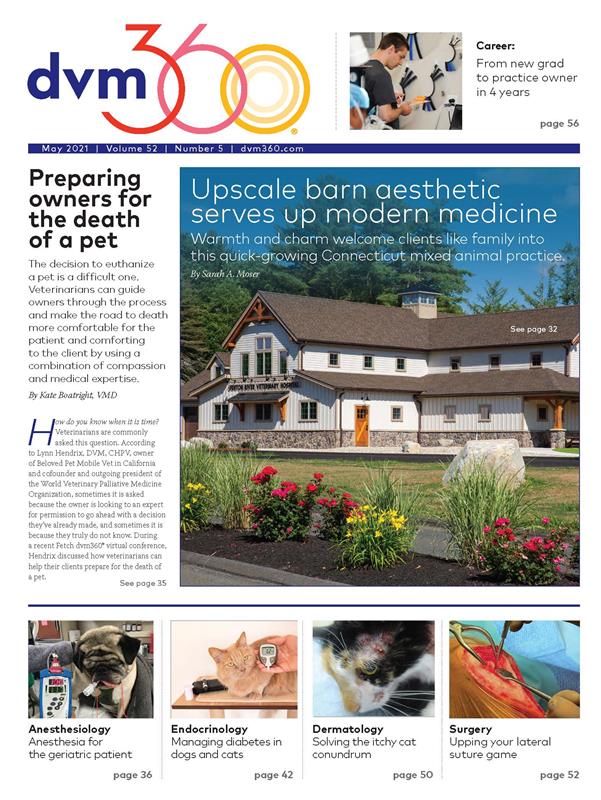PIMS for corporate practices
Veterinary consolidators, this one's for you. Find out how to ensure your practice seamlessly transitions to using a practice information management system.
A number of articles out there offer overviews of practice information management systems (PIMS) and advice on how to select the right one. But those articles are focused on choosing a PIMS for private practices. Veterinary consolidators have slightly different priorities for this software, including efficient scaling, compatibility with existing systems, remote accessibility, the ability to analyze data across all practices, and the need to respond to existing and future client demands.
Upon acquiring new practices, consolidators are faced with varied operational deficiencies, often including a mishmash of software that is most likely outdated. Implementing a new PIMS across multiple practices needs to be managed effectively through thoughtful change management processes. Mismanagement of the system integration strategy can be a big setback for consolidators. Imagine spending time, money, and effort to implement the system and train the staff and then suddenly realize the system no longer serves your needs or, worse, people are not using it. A veterinarian I spoke with recently estimated that her 3 practices would plan to lose about $75,000 in retraining, missed charges, and mistakes from introducing a new PIMS. So, making the transition better be worth it.
Post-acquisition improvements and increasing practice margins become an even more pressing issue as competition in the consolidation space intensifies. This article focuses on software standardization and integration, including where to start and what to consider for a smooth transition to a system that will remain relevant for years to come.
Setting a strategic filter
Although intuitively it may seem that having a unified PIMS across all practices makes sense, it’s worth taking some time to first conduct an initial assessment of the organization’s readiness for change before jumping into a new system selection process. A Consolidator Maturity Model can be used to evaluate the current phase in the consolidator lifecycle and identify areas that need to be integrated, changed, or improved. This gap analysis may reveal that it’s too early to consider changing systems.
A maturity assessment will build a road map for progressing through the consolidator life cycle and devising a strategic filter to be used for all business decisions. It’s important to start with processes and policies. Getting a new system prior to establishing workflows might lead to having a system that’s not being used because there is a lack of understanding of how to set it up or how people are going to use it. Without an organizational strategy, it’s impossible to find software that fits its needs.
It is a good idea to survey employees about their wish list of practice management capabilities and understand their major pain points when using the existing PIMS. Their answers should also be put through the strategic filter. Employees should be heard and validated during the software vetting and purchasing processes.
Strategic filter essentials
Scalability is of primary importance when it comes to choosing a PIMS for consolidated practices. The new system should be compatible with the existing hardware and software so it doesn’t create a bottleneck when adding new practices.
Secondly, a good PIMS must take real steps to improve efficiency and truly optimize workflows for employees. It should be capable of streamlining controlled substance logging and state and federal reporting, reduce the amount of paperwork, improve inventory management and procurement, and limit missed charges on invoices. An ideal PIMS should be cloud-based (accessible from anywhere with an internet connection) and adaptable to mobile devices.
Finally, the new system should support the features that are growing in demand among clients and will help improve their loyalty. This includes telemedicine capabilities, support for multiple payment options (including text to pay), integration with pet insurance and wellness plan providers, and marketing automation features to execute an effective loyalty program.
A good PIMS not only helps employees do their work better, faster, and easier but is also a source of valuable data that can help improve business performance. Data requirements for consolidated practices are greater because unification and alignment around the same SKUs become mandatory.
The ability to pull data from all PIMS to analyze performance, compare primary profit centers to primary cost centers, and pinpoint insights and new opportunities is essential for veterinary consolidators.
The bottom line
At the end of the day, any change needs to be implemented very methodically, starting with a maturity assessment to build a clear roadmap and using it as a strategic filter to navigate through the consolidator lifecycle.
Ryan Leech is director of sales at VIS, the first consolidator operating platform. His desire is to help clients use technology to accelerate business performance while preventing employee burnout. Ryan spends his free time with his wife, Marmie, and their 2 golden retrievers, Walter and Rosie.
Newsletter
From exam room tips to practice management insights, get trusted veterinary news delivered straight to your inbox—subscribe to dvm360.

